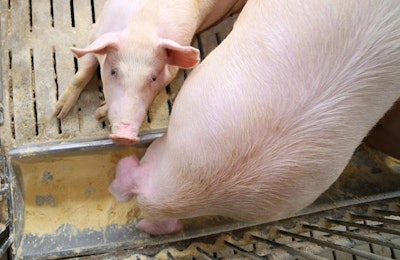
Lypopolysaccharides (LPS) are the main component of endotoxins that give certain bacteria their pathogenic properties. Endotoxins are released into the environment (such as that of the gut lumen) only when bacteria die. When released, they trigger the host’s immune system, which ultimately produces antibodies targeting these same, but live, pathogenic bacteria (similar to vaccines). If unchecked, endotoxins enter the blood stream and cause endotoxemia, leading to septic shock, if the immune response is too strong. Although endotoxins, in large concentrations, can cause such dramatic effects as hemorrhagic shock and severe diarrhea, they are also responsible, at reduced levels, for fever, reduced resistance to infection, and depressed feed intake and growth.
Exotoxins are different from endotoxins
On the other hand, what is not so widely known is the fact that bacteria, while alive, secrete other toxins, which are called exotoxins, a term used to imply these are toxins meant to be secreted in the environment while the bacteria are still alive. Of course, exotoxins stored within the cell are also released upon cellular disruption, adding thus to the overall toxin levels in their environment. Here it is important to note that bacterial life is quite short. Exotoxins are extremely potent compounds that cause major damage to the animal either locally (in the intestines, for example) or through systemic infection. One very well-known exotoxin is that produced by Clostridium botulinum, popularly known under the trade name of Botox. Most exotoxins are proteins, and many of them are enzymes; as enzymes they are highly recycled. This is why even small amounts of exotoxins can be highly toxic.
In contrast to endotoxins, most exotoxins are heat labile, and as such feed thermal processing can destroy exotoxins already in the feed. But it does not stop bacteria from producing new quantities after feed processing, during storage, and of course in the animal’s gastrointestinal tract. Plus, not all bacteria enter the animal’s organism through feed alone. Although exotoxins are susceptible to antibodies produced by the immune system, many are so toxic that they can cause death before the animal’s immune system has been fully activated to build defenses against them. Such cases include diseases as botulism, tetanus, gas gangrene, diphtheria, cholera, plague, and several types of food intoxication. In most non-lethal cases, nevertheless, enough critical damage occurs before the immune system is able to fully respond.
Enterotoxins
In domestic animals, the most important exotoxins are those that cause damage to the enteric epithelium of the gastrointestinal tract. These exotoxins are known as enterotoxins. As a general rule, enterotoxins are produced by gram-positive bacteria rather than by gram-negative bacteria, although there are exceptions to this rule. A well -nown example of an enterotoxin is toxin B, produced by Staphylococcus aureus, which is associated with food-borne illness. This kind of toxin causes fever, chills, headache, chest pain, and persistent coughing. To distinguish this disease from bacterial endotoxin illness (food poisoning), it is known as food intoxication.
Enterotoxins have three different modes of actions.
One type of enterotoxins (invasins) destroy the host cell to which it is bound. In essence, these enterotoxins make a hole in the host cell membrane. An example of such enterotoxin is hemolysin produced by Escherichia coli, causing hemolytic diarrhea.
Another type of enterotoxins, known as superantigen toxins, cause overstimulation of the immune system, leading to systemic shock. Such is the exotoxin secreted by Staphylococcus aureus.
Finally, a third type of enterotoxins are known as A-B toxins, because they have two subunits. The A subunit binds to the host cell and perforates the membrane, which allows the B subunit to enter the cell and cause damage. Such is the enterotoxin produced by Vibrio cholerae.
Some exotoxins only attack specific types of cells, but most (such as those produced by staphylococci, streptococci, and clostridia) have very broad cytotoxic activity causing damage to various types of cells and tissues, resulting in tissue necrosis (death). Thus, to the very persistent problem of hemolytic diarrhea in pigs, the also quite significant disease of necrotic enteritis in poultry is ascribed to exotoxins.
Theory into practice
In order to better understand exotoxins, it is important to draw an analogy with mycotoxins: the former are toxins produced by bacteria, the latter toxins produced by molds. Today, the importance of controlling mycotoxins is well appreciated, but that of controlling exotoxins remains in the sphere of therapeutic treatment rather than strategic intervention and prevention. Nevertheless, drawing again from the example of mycotoxins, it could be possible to control enterotoxins by similar mechanisms, but up to now, there has been a paucity of information concerning the efficacy of in-feed supplements on enterotoxins. This is despite the fact that we are already in an era where nutrition and disease prevention are strongly interlinked, and new functions are being discovered for existing products.

















